TOCPythonLanguageCode LineCode BlockFunctionsCommon PackagesResource and LinkKnowledge BaseHow ToFAQ
Draft for Information Only
Content
Python Dictionary
Characteristics of Dictionary
Ordered
Changeable
No Duplicates
Operations of Dictionary
Item Manipulation
Single Item Manipulation
Multiple Items Manipulation
Dictionary Manipulation
Dictionary Generation
Other Iterator Generation
Dictionary view objects
Source and Reference
Python Dictionary
A dictionary is a collection of key:value pairs enclosed by curly brackets.Characteristics of Dictionary
Items of a dictionary are ordered, changeable and no duplicates.Ordered
Originally, dictionaries are unordered sets in Python. But now, dictionaries are a collection of ordered items.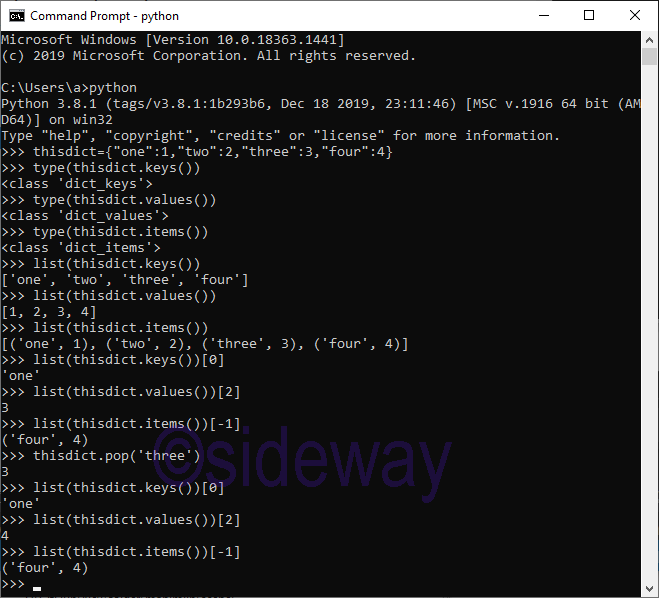
Changeable
The value of a specific item in a dictionary can be changed by referring to its key.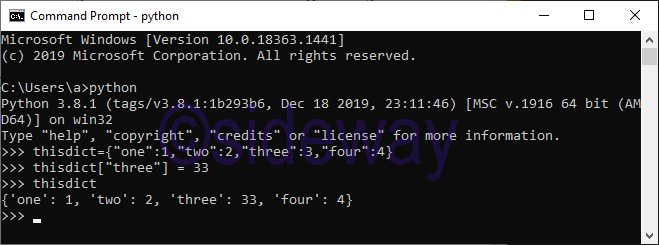
No Duplicates
All keys in a dictionary must be unique and no duplicate is allowed.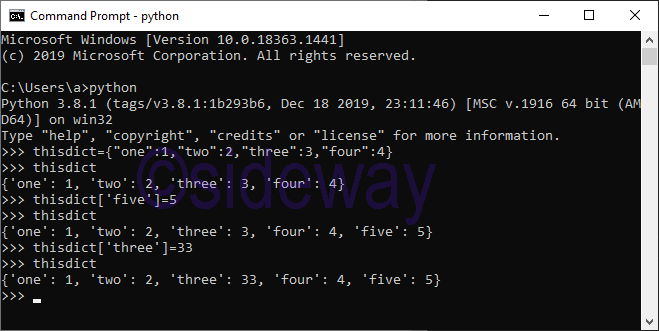
Operations of Dictionary
d={key:value}Item Manipulation
Single Item Manipulation
key[,
default])
key[,
default])
default])

Multiple Items Manipulation
[other])
update() accepts either another dictionary object or an iterable of key/value pairs (as tuples or other iterables of length two). If keyword arguments are specified, the dictionary is then updated with those key/value pairs: d.update(red=1, blue=2).
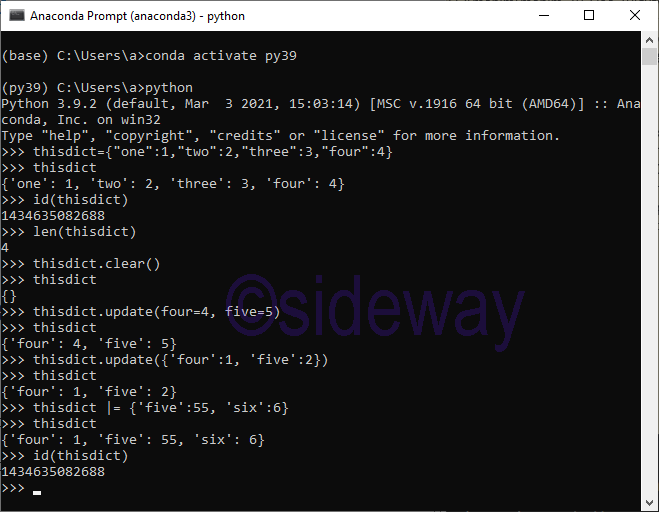
Dictionary Manipulation
Dictionary Generation
classmethodCreate a new dictionary with keys from iterable and values set to value.d.fromkeys(
iterable[,
value])
fromkeys() is a class method that returns a new dictionary. value defaults to None. All of the values refer to just a single instance, so it generally doesn’t make sense for value to be a mutable object such as an empty list. To get distinct values, use a dict comprehension instead.

Other Iterator Generation
An equality comparison between one dict.values() view and another will always return False. This also applies when comparing dict.values() to itself: >>> >>> d = {'a': 1} >>> d.values() == d.values() False
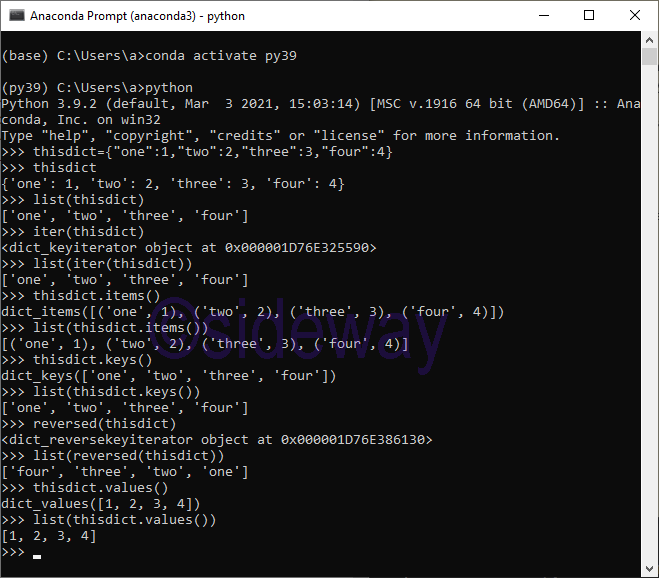
Dictionary view objects
The objects returned by dict.keys(), dict.values() and dict.items() are view objects. They provide a dynamic view on the dictionary’s entries, which means that when the dictionary changes, the view reflects these changes.Source and Reference
©sideway
ID: 210500008 Last Updated: 5/8/2021 Revision: 0
Latest Updated Links
- Travel Singapore Sight Mandai(last updated On 12/8/2025)
- Travel Singapore Sight Bird Paradise(last updated On 12/7/2025)
- Travel Singapore Sight(last updated On 12/6/2025)
- Travel Singapore Rail Network(last updated On 12/5/2025)
- Travel Singapore Things to Know(last updated On 12/4/2025)
- Travel Singapore(last updated On 12/3/2025)
- Legrand Galion(last updated On 12/2/2025)
- Schneider Electric AvatarOn(last updated On 12/1/2025)
- Alfalux(last updated On 11/30/2025)
- Novabell(last updated On 11/29/2025)
- TownGas NJW12RM1(last updated On 11/28/2025)

 Nu Html Checker
Nu Html Checker  53
53  na
na  na
na
Home 5
Business
Management
HBR 3
Information
Recreation
Hobbies 9
Culture
Chinese 1097
English 339
Travel 24
Reference 79
Hardware 54
Computer
Hardware 259
Software
Application 213
Digitization 37
Latex 52
Manim 205
KB 1
Numeric 19
Programming
Web 289
Unicode 504
HTML 66
CSS 65
SVG 46
ASP.NET 270
OS 431
DeskTop 7
Python 72
Knowledge
Mathematics
Formulas 8
Set 1
Logic 1
Algebra 84
Number Theory 206
Trigonometry 31
Geometry 34
Calculus 67
Engineering
Tables 8
Mechanical
Rigid Bodies
Statics 92
Dynamics 37
Fluid 5
Control
Acoustics 19
Natural Sciences
Matter 1
Electric 27
Biology 1
